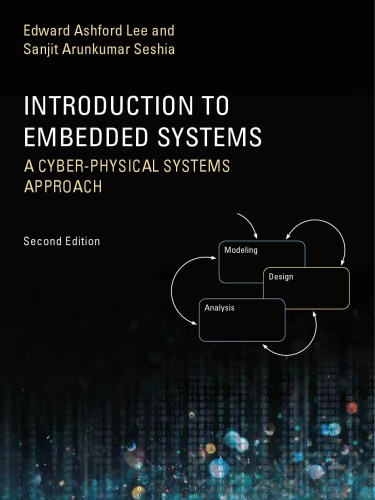

Most ebook files are in PDF format, so you can easily read them using various software such as Foxit Reader or directly on the Google Chrome browser.
Some ebook files are released by publishers in other formats such as .awz, .mobi, .epub, .fb2, etc. You may need to install specific software to read these formats on mobile/PC, such as Calibre.
Please read the tutorial at this link. https://ebooknice.com/page/post?id=faq
We offer FREE conversion to the popular formats you request; however, this may take some time. Therefore, right after payment, please email us, and we will try to provide the service as quickly as possible.
For some exceptional file formats or broken links (if any), please refrain from opening any disputes. Instead, email us first, and we will try to assist within a maximum of 6 hours.
EbookNice Team

Status:
Available0.0
0 reviewsAn introduction to the engineering principles of embedded systems, with a focus on modeling, design, and analysis of cyber-physical systems.
The most visible use of computers and software is processing information for human consumption. The vast majority of computers in use, however, are much less visible. They run the engine, brakes, seatbelts, airbag, and audio system in your car. They digitally encode your voice and construct a radio signal to send it from your cell phone to a base station. They command robots on a factory floor, power generation in a power plant, processes in a chemical plant, and traffic lights in a city. These less visible computers are called embedded systems, and the software they run is called embedded software. The principal challenges in designing and analyzing embedded systems stem from their interaction with physical processes. This book takes a cyber-physical approach to embedded systems, introducing the engineering concepts underlying embedded systems as a technology and as a subject of study. The focus is on modeling, design, and analysis of cyber-physical systems, which integrate computation, networking, and physical processes.
The second edition offers two new chapters, several new exercises, and other improvements. The book can be used as a textbook at the advanced undergraduate or introductory graduate level and as a professional reference for practicing engineers and computer scientists. Readers should have some familiarity with machine structures, computer programming, basic discrete mathematics and algorithms, and signals and systems.